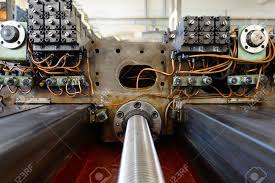Fly-by-wire (FBW) is an aircraft surface control that combines electric motors, digital computers, and fiber optics. Major Sutherland, in his book titled “Fly-By-Wire: Flight Control Systems,” mentions another terminology for this system is “electrical primary flight control” and “pseudo-fly-by-wire.” James Tomayko, in his book entitled “Computer Take Flight: A History of NASA’s Digital Pioneering Fly-By-Wire Project,” calls NASA’s fly-by-wire because of the limitation of aircraft surface control by pilots. Fly-by-wire controls control activators with electrical signals rather than mechanical. In fly-by-wire systems, control is centered on the computer. Pilots “command” the computer and the computer sends a signal to the activator to act to move the aileron, elevator, and rudder. Aside from that, if your FBW’s ball screws need to be repaired, we recommend you to call the most trusted read full report near your hangar.
The creation of fly-by-wire was the same as when NASA conducted research creating LLRV or Liuar Landing Research Vehicle in the 1960s. That is research creating modules to land on the Moon. Control the surface of the aircraft, it is difficult to do if you rely on a mechanical approach. The fly-by-wire system on the LLVR was then implemented on the X-15, a hypersonic plane that was powered by a rocket.
The research group led by Melvin Burke then translated NASA’s fly-by-wire on many planes, including commercial aircraft. Some of the earliest aircraft using this system include the T-33, F-94, JAS-39, to The German A-4.
At the beginning of its appearance, the computers used were analog computers. The German A-4 is a fly-by-wire system that is controlled on an analog computer. Then, there is also the Canadian CF-105. The use of analog computers has moved to digital computers when technological developments have taken place, one of which was carried out by IBM. Gemini was the first aircraft to use a digital computer-controlled fly-by-wire system. Today’s modern planes generally use digital computer-controlled fly-by-wire systems.
However, when the aircraft control system has a problem or there is a disturbance, then it cannot be overcome then there is a risk that the aircraft cannot be controlled. If this happens, the risk is fatal for a flight.

